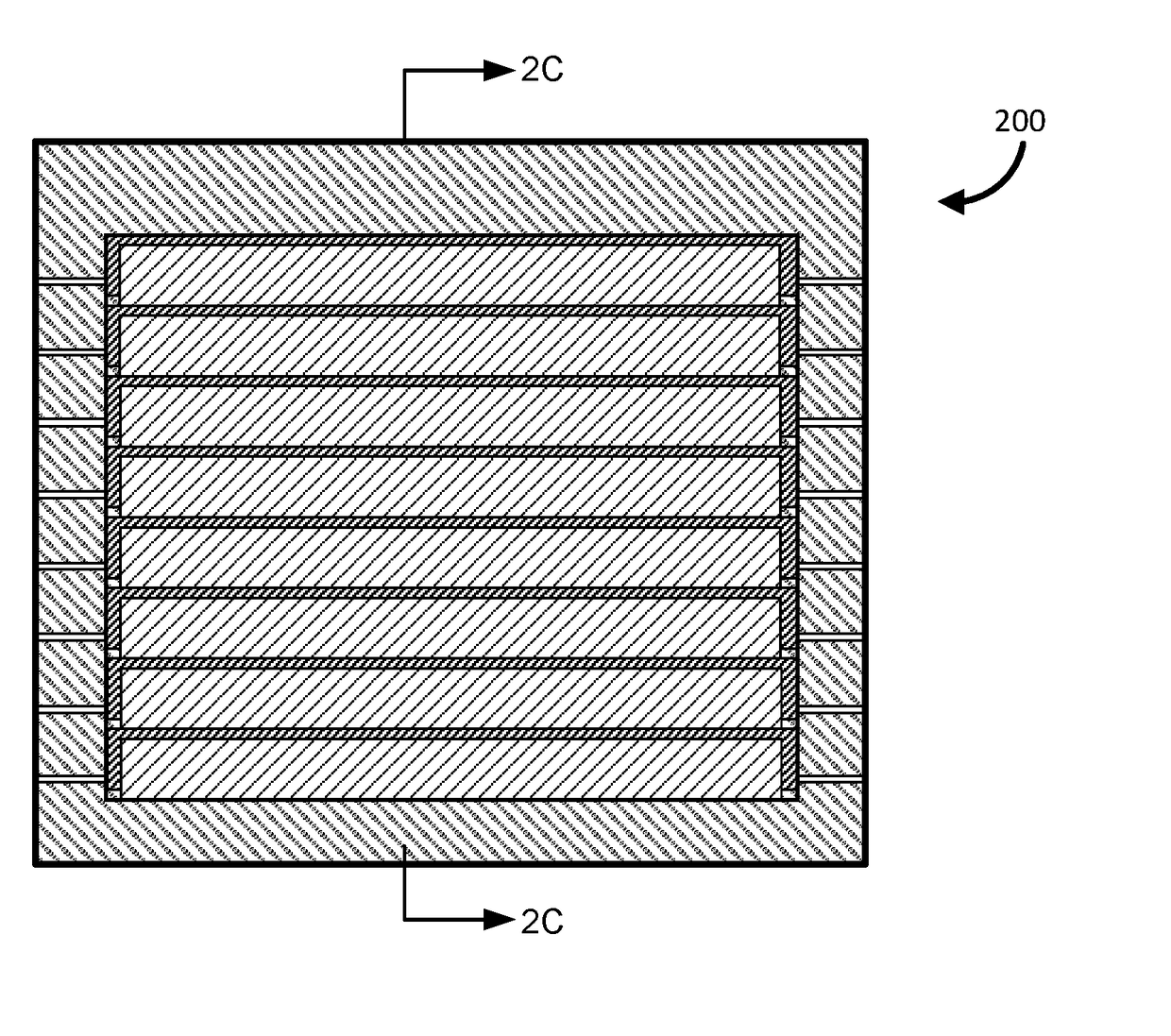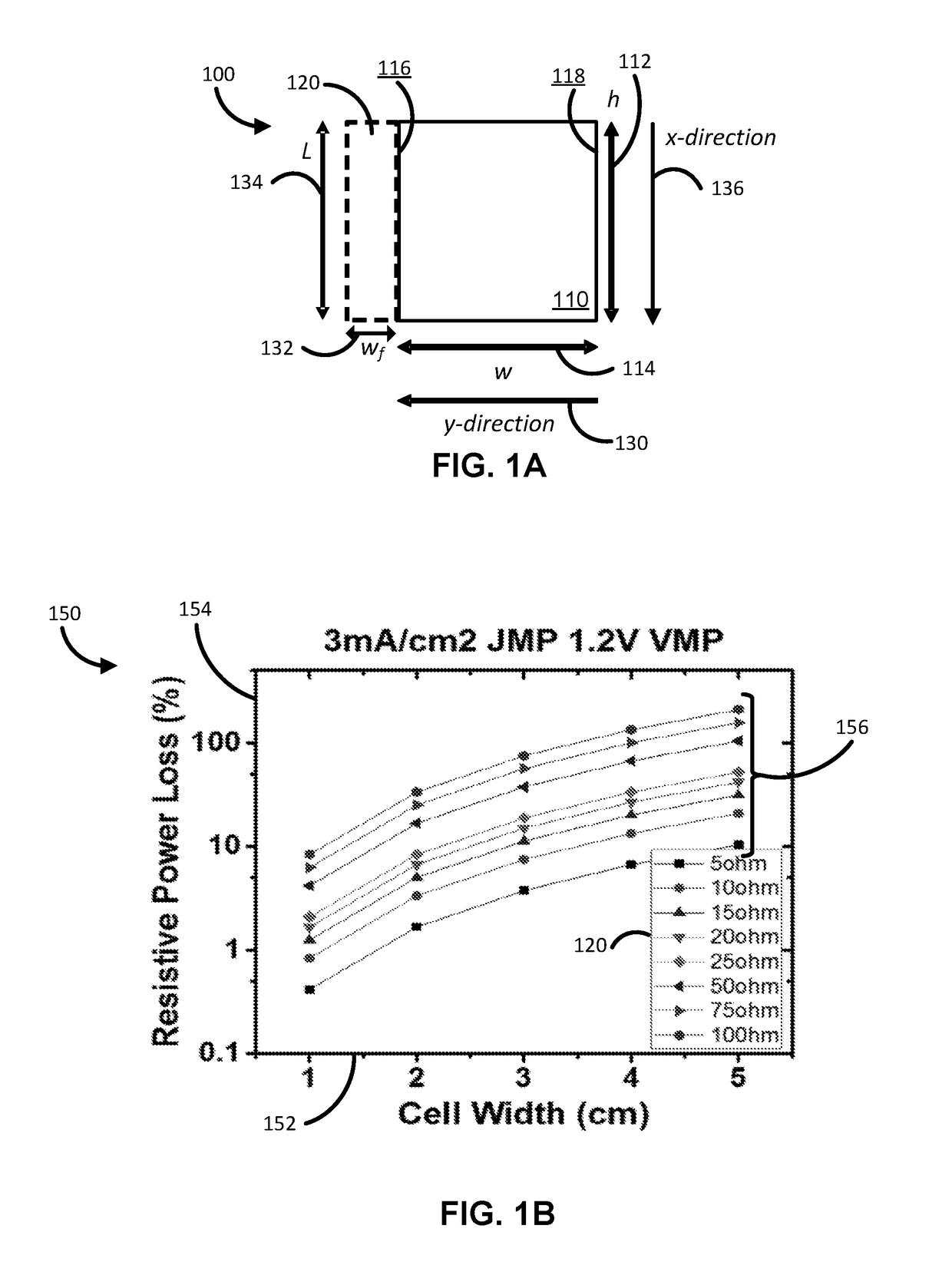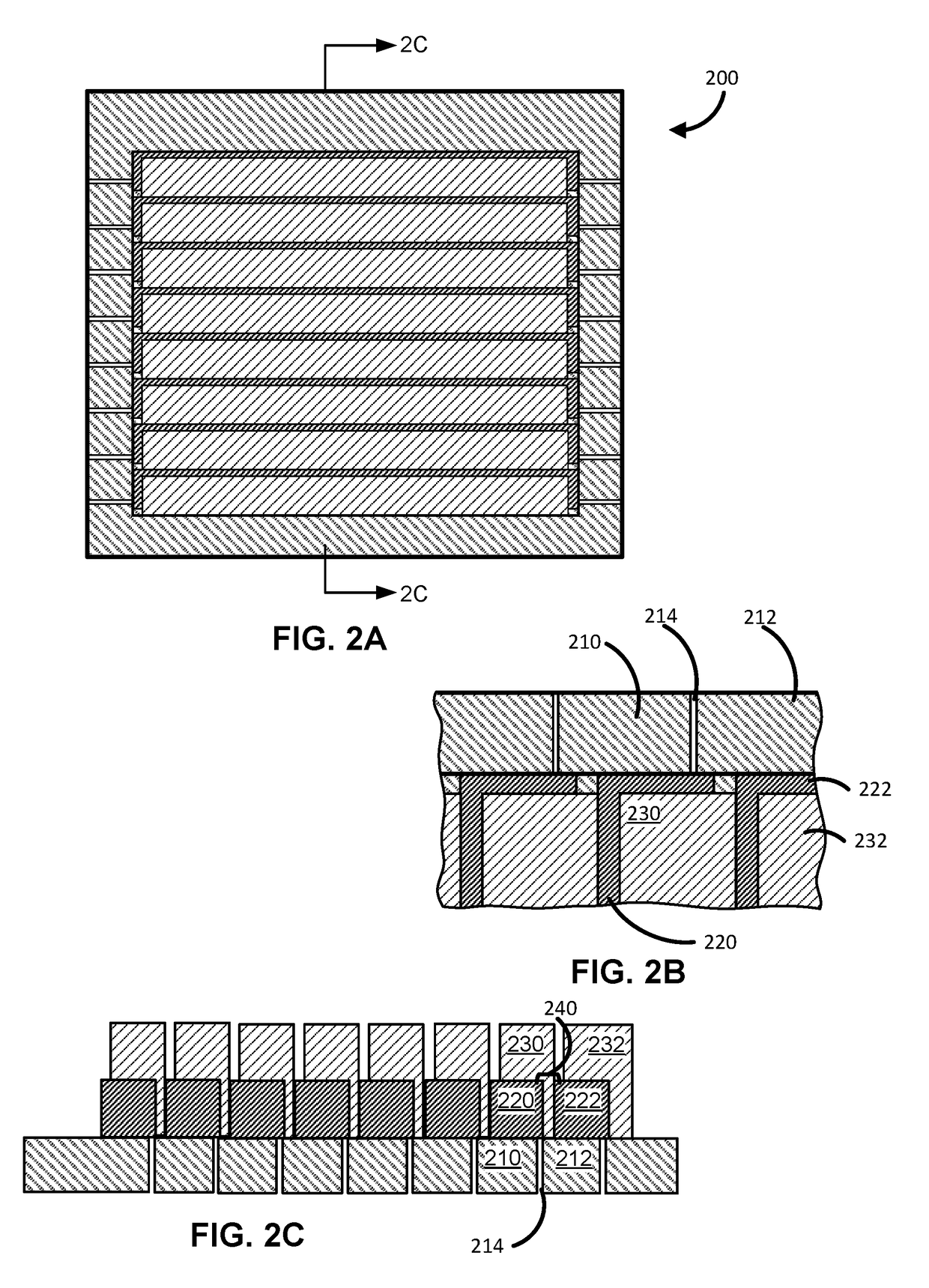Single cell photovoltaic module
a single-cell, photovoltaic module technology, applied in the direction of basic electric elements, electrical equipment, semiconductor devices, etc., can solve the problems of limited power loss caused by series resistance, and achieve the effects of reducing current travel, reducing visible patterns, and reducing power loss from series resistan
- Summary
- Abstract
- Description
- Claims
- Application Information
AI Technical Summary
Benefits of technology
Problems solved by technology
Method used
Image
Examples
Embodiment Construction
[0047]The inventors have determined that transparent electrode layers generally have a higher sheet resistance than nontransparent electrodes. The addition of series resistance in photovoltaic (PV) modules may cause a higher power loss and may significantly reduce the overall efficiency of the PV modules. In conventional PV technologies, the reduction of series resistance is of significant importance to obtaining the highest performance and is achieved through a number of approaches that include, but are not limited to, patterning the module into subcells with optimized dimensions, use of highly conductive opaque conductive electrodes, and the deposition of highly conductive bus bars over the module area. These optimizations enable conventional technologies to limit series resistance but different processes and methodologies must be used when fabricating transparent photovoltaic modules, in particular, PV modules with large active areas (and thus large series resistance). Accordingl...
PUM
 Login to View More
Login to View More Abstract
Description
Claims
Application Information
 Login to View More
Login to View More - R&D
- Intellectual Property
- Life Sciences
- Materials
- Tech Scout
- Unparalleled Data Quality
- Higher Quality Content
- 60% Fewer Hallucinations
Browse by: Latest US Patents, China's latest patents, Technical Efficacy Thesaurus, Application Domain, Technology Topic, Popular Technical Reports.
© 2025 PatSnap. All rights reserved.Legal|Privacy policy|Modern Slavery Act Transparency Statement|Sitemap|About US| Contact US: help@patsnap.com



